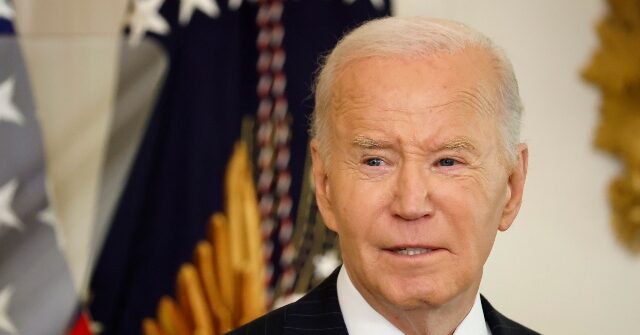In recent weeks, a curious surge in drone sightings across the East Coast, particularly in New Jersey and New York, has engendered a climate of alarm and confusion among local residents and authorities. Reports of these mysterious, car-sized drones, described as exhibiting advanced flying capabilities, have been flooding in, prompting heightened attention from various governmental bodies. However, the Biden administration has opted to downplay these sightings. During a briefing, National Security Council spokesman John Kirby suggested the majority of the reports are likely the result of mistaken identity involving conventional aircraft, such as legally operated helicopters or planes, displacing the seriousness of the concerns voiced by the public.
Kirby’s remarks came in response to over 3,000 reports of drone sightings, yet federal investigators have struggled to substantiate these claims. The official stance insists that most of the visual reports likely correspond to lawful aviation activity. Despite this assertion, the surge in sightings correlates with testimony from credible witnesses, including local law enforcement and military personnel from the U.S. Army’s Picatinny Arsenal, indicating that the mysterious drones could be operating independently and at considerable altitudes. Kirby maintained that no verified imagery exists to corroborate the claims of drone sightings, calling into question the reliability of the reports submitted.
Interestingly, Kirby’s comments touch upon a pressing issue; the government lacks the necessary authority to effectively respond to unidentified aerial phenomena. He suggested congressional legislation could be essential in expanding counter-drone powers, highlighting an institutional gap that aligns with the growing public unease regarding perceived aerial intrusions. Some stakeholders, such as Congressman Jeff Van Drew from New Jersey, have echoed sentiments of mistrust towards the government’s assessment of the situation. Van Drew’s assertions involve claims that the drones may originate from an Iranian mothership situated offshore, a theory rapidly dismissed by the Pentagon but indicative of the escalating conspiracy theories surrounding the drone incidents.
Nonetheless, the government’s dismissal of the phenomenon has led to further skepticism about the true nature of these drone sightings. While civilian drone experts offer explanations rooted in mundane technology, they concede that several sightings defy uncomplicated assessments. Hayley Connelly, a local drone expert, has noted that the technological capabilities demonstrated by these drones appear to exceed those available within civilian markets, insinuating a potential military or governmental origin. This sentiment is echoed by Brett Velicovich, a U.S. Army veteran, who speculates that an adversary might be behind the drone activities, suggesting that if these were mere military tests, the government would likely have quelled public concern by now.
The response from the Biden administration mirrors previous encounters with unidentified aerial threats, including the highly publicized Chinese spy balloon incident earlier in the year. Reports indicated that government officials originally attempted to keep the existence of the balloon a secret from the public, intending to monitor it without alerting Congress, further seeding public distrust of the administration’s transparency in matters of national security. The parallelisms here are troubling; both cases suggest a potential pattern of inadequate responses to emerging threats from the skies, prompting calls for improved investigative measures and enhanced accountability.
In summation, the ongoing narrative surrounding the mysterious drone sightings on the East Coast raises critical questions about national security, governmental transparency, and public safety. The Biden administration’s dismissive tone juxtaposed with escalating public concern accentuates a disconnect that could have serious implications. As the investigation lingers without clear resolution, the overlap between conspiracy theories and legitimate security concerns invites scrutiny into how such encounters are managed. Incidents like these challenge the administration to respond more transparently and effectively, not merely to quash rumors, but to maintain public confidence in national security institutions and their ability to address threats both known and unknown.

